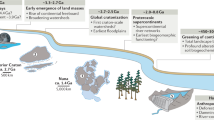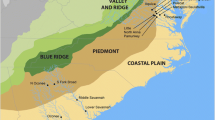Abstract.
Societal needs for power generation, water management/use, and land uses (e.g., urban and agricultural) have often resulted in a significant departure from the natural processes of hydrologic regimes and material transport and deposition throughout most of the rivers flowing through arid and semi-arid landscapes of the western USA. We examine the compromised ecosystem integrity of one such river, the upper Snake River in eastern Idaho, below a large irrigation and power dam that has altered hydrologic regimes and reduced channel sediment supply. We review the ecological structure and function of gravel-bed rivers as they vary across a hierarchy of landscape scales with different spatial and temporal dimensions. Major linkages within the large, alluvial river systems of the western USA include exchange of water and materials along longitudinal connections from streams to rivers, lateral connections between river and floodplain systems, and vertical surface and subsurface (hyporheic) water exchanges. Longitudinal linkages dominate confined (canyon) river reaches while unconfined (floodplain) reaches show strong affinities for lateral and vertical exchange. Hydrogeomorphic processes, driven by river power and cut and fill alluviation, produce a dynamic landscape in floodplain reaches, which we refer to as a Shifting Habitat Mosaic (SHM). The SHM fosters high physical and ecological diversity of habitats, biotic communities, and ecosystem complexity. In this case study, we examine the dynamics of a series of floodplains along a 90 km river landscape, employing an airborne spectrophotometer, producing georeferenced hyperspectral imagery, coupled with ground truth measures of river hydraulics, river depth, riparian vegetation and other surface characteristics. From these data we derived estimates of the hydraulics and hydrographic regimes necessary to mobilize channel and riparian sediments, thus reestablishing the dynamics of the river SHM. We also evaluated subsequent variation in aquatic and riparian habitat characteristics. Evaluation of these factors, which affect interactions between the river channel and the surrounding river–riparian corridor, permitted us to develop a restoration strategy focused on normative variation among the various physical and biotic processes contributing to ecosystem integrity.
Similar content being viewed by others
Author information
Authors and Affiliations
Corresponding author
Additional information
Received: 16 November 2003; revised manuscript accepted: 14 June 2004
Rights and permissions
About this article
Cite this article
Hauer, F.R., Lorang, M.S. River regulation, decline of ecological resources, and potential for restoration in a semi-arid lands river in the western USA. Aquat. Sci. 66, 388–401 (2004). https://doi.org/10.1007/s00027-004-0724-7
Issue Date:
DOI: https://doi.org/10.1007/s00027-004-0724-7




